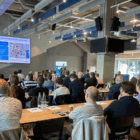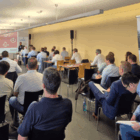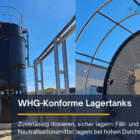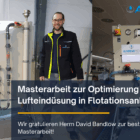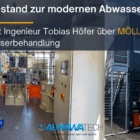I&C technology (measurement and control technology) is an indispensable discipline in industrial water and wastewater technology. It includes the measurement of physical and chemical parameters, the control of processes and the regulation of systems to ensure the efficiency, safety and reliability of modern water treatment systems. With increasing automation and digitalization, I&C technology is playing an increasingly important role in meeting the requirements for process control, energy efficiency and compliance with legal regulations.
This article provides a comprehensive explanation of I&C technology, its technical principles and areas of application in water technology.
Table of contents
Definition of MSR technology
Measurement and control technology refers to a technical system that consists of three closely linked functions:
- Measurement (M): Recording of physical or chemical variables such as pH value, temperature, pressure, flow rate or concentrations.
- Control (S): Influencing a system through defined sequences or programs, without feedback (e.g. switching on a pump under certain conditions).
- Regulation (R): Continuous adjustment of a system based on measured values in order to maintain target values (e.g. pH regulation by dosing acids or bases).
Goal:
The MSR technology ensures that the water treatment or wastewater treatment processes run under defined conditions in order to achieve optimum results with minimum consumption of resources.
Technical basics of I&C technology
1. measurement: basics and sensor technology
Measurement is the first step in the I&C cycle and provides the data required to control and regulate processes.
Typical measured variables:
- Physical: temperature, pressure, flow rate, fill levels.
- Chemical: pH value, conductivity, COD (chemical oxygen demand), TOC (total organic carbon), chlorine, nitrate or phosphate concentrations.
Sensor types and operating principles:
- pH sensors: Glass electrodes measure the hydrogen ion concentration.
- Conductivity sensors: Inductive or contacting sensors determine the ion concentration in the water.
- Flow sensors: Electromagnetic flow meters (EMF) measure the volume flow.
- Turbidity sensors: Optical sensors detect the particle density in the water.
- Pressure sensors: Piezoresistive or capacitive sensors monitor the system pressure.
2. control: sequence programming and automation
They are controlled by programmable logic controllers (DCS or PLC), which trigger predefined actions based on the measured parameters.
Examples of control tasks:
- Starting and stopping pumps or agitators.
- Switching between different operating modes (e.g. aeration phases in sewage treatment plants).
- Activation of alarms when limit values are exceeded.
Technologies:
- PLCs (programmable logic controllers): Industrial control devices that can be programmed flexibly.
- IoT-based control systems: Integration of cloud systems for remote monitoring and control.
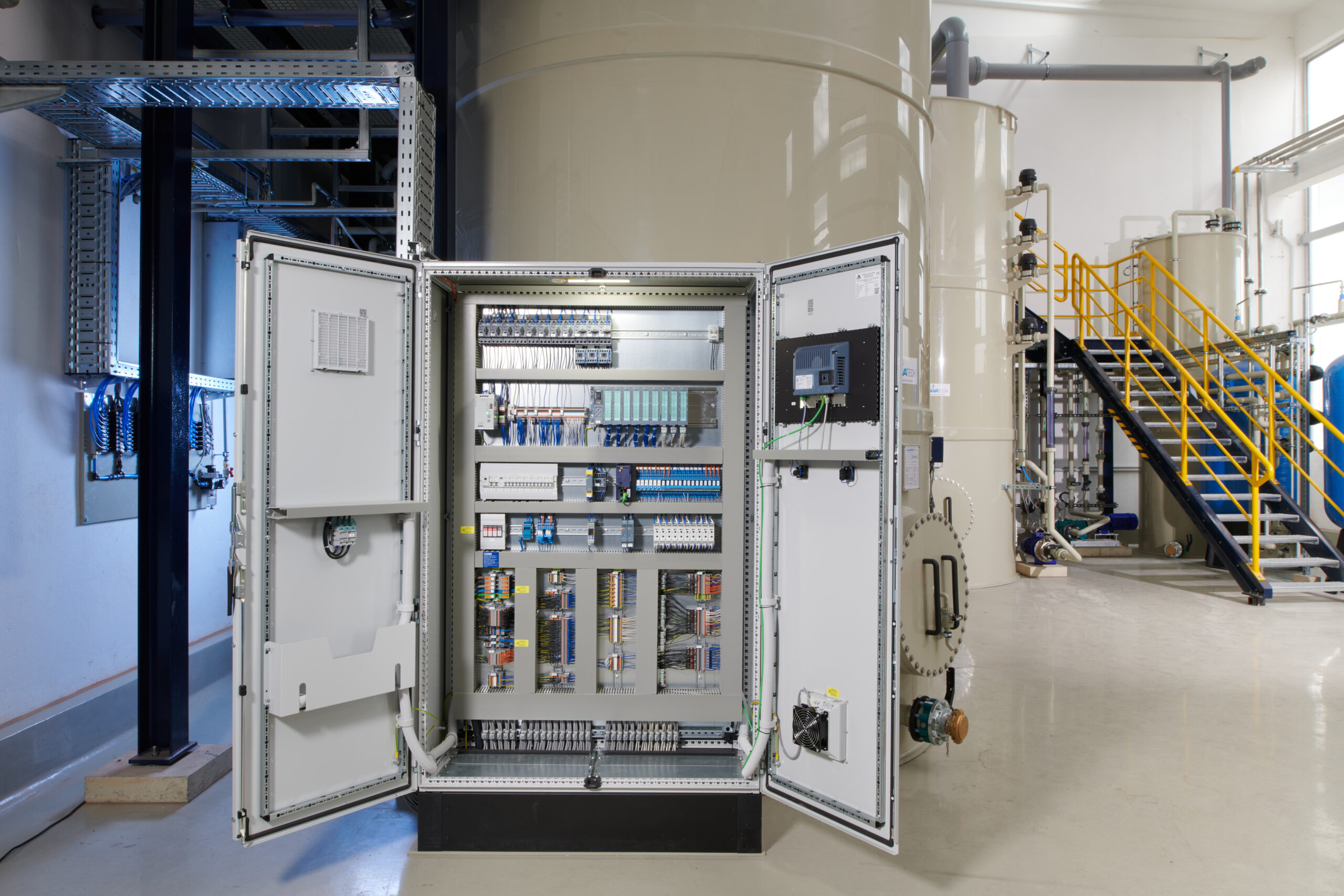
Photo: One of our switchgears for controlling and regulating our wastewater treatment and water treatment plants
3. control: precision and dynamics
The control system continuously adjusts the process parameters in order to maintain specified setpoints. This is achieved through the use of control loops.
Typical control loops in water technology:
- pH control: Automatic dosing of acids or alkalis for neutralization.
- Flow control: Setting the flow rate of pumps based on demand.
- Temperature control: Control of heating or cooling systems.
Control strategies:
- PID controller: Combination of proportional, integral and differential control for precise adjustments.
- Adaptive control: Dynamic adjustment of the controller parameters to changing conditions.
Applications of I&C technology in water and wastewater treatment
1. water treatment
- Membrane processes: Monitoring and control of pressure, flow and fouling levels (e.g. SDI value) in reverse osmosis or ultrafiltration systems.
- Chemical dosing: Precise control of the addition of antiscalants, flocculants or corrosion inhibitors.
- Drinking water monitoring: Measurement and control of disinfectants such as chlorine or ozone.
2. wastewater treatment
- Wastewater treatment plants: Control of aeration in activated sludge tanks based on oxygen measurements.
- Biogas plants: Monitoring methane production and controlling the temperature in digesters.
- Nutrient removal: Control of anoxic and aerobic zones for nitrogen and phosphorus removal.
3. cooling systems
- Corrosion and fouling control: Regulation of the dosing of inhibitors and biocides based on conductivity and turbidity measurements.
- Desalination: Monitoring and control of the cooling water quality using conductivity measurements.
4. water recycling
- Filtration systems: Control of backwash cycles in sand or activated carbon filters.
- Concentration monitoring: Control of water quality in closed circulation systems.
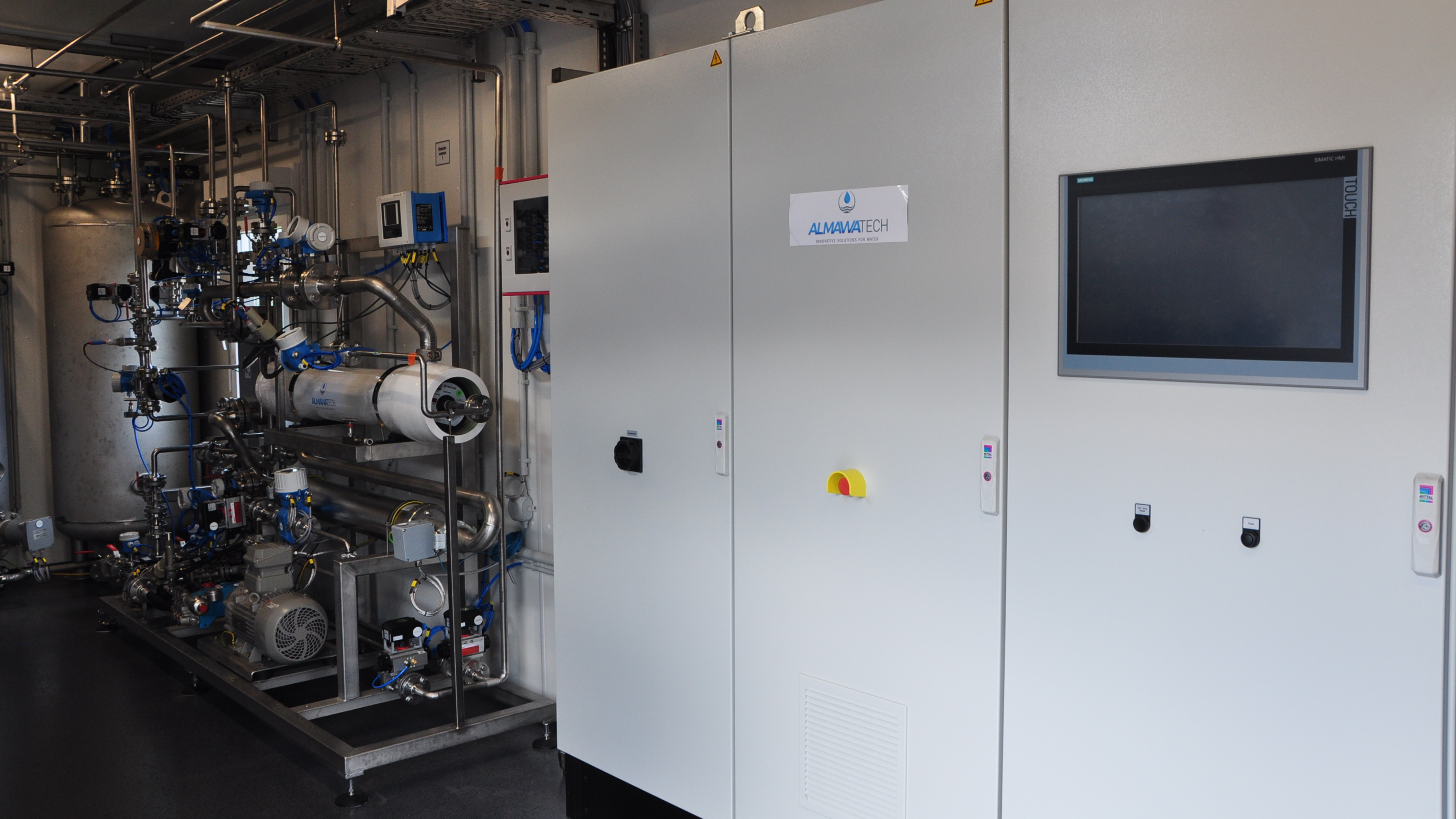
Photo: Our concentrate-staged reverse osmosis as a research system with a large number of measuring points and control technology
Challenges and solutions in I&C technology
1. calibration and maintenance:
measuring devices must be calibrated regularly in order to provide precise data.
- Solution: Automatic calibration systems and remote maintenance.
2. susceptibility to faults:
sensors can be affected by dirt or aggressive media.
- Solution: Use of chemical-resistant materials and self-cleaning systems.
3. data integration:
In heterogeneous systems, the integration of different devices is often a challenge.
- Solution: Use standardized communication protocols such as Modbus or Profibus.
The future of I&C technology: trends and innovations
1. digitalization and IoT:
IoT-enabled MSR systems enable real-time monitoring and control of water treatment plants via cloud platforms.
2. artificial intelligence (AI):
AI-supported algorithms analyze process data and automatically optimize control and regulation strategies.
3. sustainability:
MSR technology helps to minimize the consumption of energy and chemicals in water technology, thereby reducing the environmental impact.
Conclusion
I&C technology is the backbone of modern water and wastewater treatment plants. It enables precise process control, increases efficiency and ensures compliance with strict environmental regulations. Through the targeted use of measurement, control and regulation systems, plant operators can not only reduce costs, but also promote sustainable water management. With increasing digitalization and automation, the importance of I&C technology will continue to grow in the coming years.
For further information on our products, please feel free to contact us at any time!


